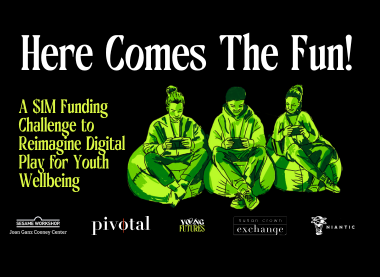Protecting the Sticky Fingers
April 4, 2011
A few weeks ago I blogged about Fisher Price’s new iPhone case, a plastic case that protects the devices from the poking, prodding, and sticky fingers of young children. I commented on how we’ve figured out how to protect the device from sticky fingers, but questioned who’s protecting those sticky fingers from the device. Well, it seems like Apple has taken one step in the right direction.
Recent accounts of children unknowingly racking up thousands of dollars through in-app purchases of virtual goods in games such as Smurfs Village prompted Apple to change its policy for the way purchases are made within iPhone and iPad applications. In the old operating system, there was a 15-minute window after an application was downloaded that allowed purchases to be made without having to re-enter a password. In the updated operating system, a password must be entered again when making an in-app purchase. There has been a great deal of debate about whether this initiative is enough. My opinion? Not even close. But I think we are barking up the wrong tree.
Apple has created what may be the greatest platform for kids out there, and while they do have a responsibility to protect their users — especially the little ones — the issue is not one that we can or should expect one single company to bear. I commend Apple for taking a first step. I think they can do more. But I think we need to shift our focus and accept that this is a serious and current issue that crosses platforms and devices and needs to be tackled from a policy perspective.
Concern about children’s cognitive ability to understand and evaluate advertising and commercialization has been the topic of much research, debate and policy-making for the past four decades. In 1971, almost half of the content in Romper Room was devoted to commercial promotion of its own products. Since then, policies such as The Children’s Television Act have been put in place to protect children from inappropriate commercialism. While the idea of a children’s television host blatantly selling products to her innocent audience seems absurd today, I don’t think it’s even comparable to the fact that children can unknowingly purchase virtual products while playing with apps. At least on Romper Room, kids couldn’t reach through their televisions to buy things directly.
So to me, the real question is why these in-app purchases of virtual goods are even allowed in children’s apps in the first place. If it has been established that children don’t have the cognitive ability to distinguish between commercialism and content within a television show, why is it any different within an app?
I want to be clear that I believe in the potential of apps to be a hugely positive force in children’s lives and a new economy that will help our industry thrive. I am an advocate of children’s media and understand that good content needs to be sustainable, and often commercial. I believe that developers of quality content should reap the rewards of their efforts. I am not opposed to children spending digital gold coins to buy a hat for their penguin avatar. But the idea of selling a virtual hat for real dollars seems wrong.
I think that in the long term, apps will be both better for kids and better for business if we have good policies from the get-go. By doing so, perhaps we can prevent this new medium from getting the bad rap that other media, such as television and video games, are still battling. So, my current opinion is that in-app purchases of virtual goods should simply not be allowed in children’s apps. Period. But my mind has been known to be changed, and I’d really love to hear others thoughts on this one!
Photo by teddyb on flickr



